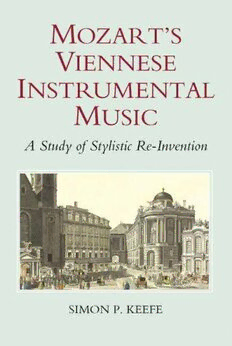
Mozart's Viennese Instrumental Music: A Study of Stylistic Re-Invention PDF
232 Pages·2007·1.454 MB·English
Most books are stored in the elastic cloud where traffic is expensive. For this reason, we have a limit on daily download.
Preview Mozart's Viennese Instrumental Music: A Study of Stylistic Re-Invention
Description:
The stylistic evolution of Mozart's Viennese instrumental repertory as a whole [1781-1791], closely tied to historical and contextual lines of enquiry, has yet to receive systematic attention. This book fills the gap through a study of stylistic re-invention, a practically- and empirically-based theory that explains how innovative, putatively inspired ideas take shape in Mozart's works and lead to stylistic re-formulation. Re-invention comprises a two-stage process: Mozart manipulates pre-existent stylistic features of his music to climactic effect, in so doing introducing a demonstrably 'new' stylistic dimension with broad aesthetic resonance; he subsequently re-appraises his style in response to the dimension in question. From close examination of a variety of Mozart's works [piano concertos, string quartets and symphonies in particular], supported by study of Mozart's other chamber and dramatic works, the author shows that stylistic re-invention is a consistent and coherent manifestation of stylistic development. Ultimately re-invention puts centre stage the interaction of intellectual and imaginative elements of Mozart's musical personality, accounting both for processes of reflection and re-appraisal and for striking conceptual leaps.
See more
The list of books you might like
Most books are stored in the elastic cloud where traffic is expensive. For this reason, we have a limit on daily download.
